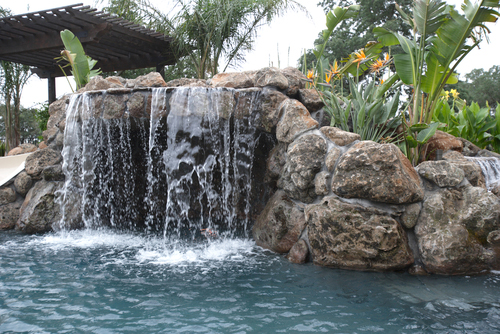perimeter overflow
It happens only rarely, but every once in a while you run into a client who wants to do things out of sequence. Most often, we're asked to work on projects where there's an existing home that needs a watershape. Just as commonly, we're brought in when a home is being built at the same time as a new pool and its associated environment. In the case described in this article, however, our client owned a 20-acre site with little more than
It definitely helps to have a good reputation within the local design community. In this case, an architect I've known for years and have worked with on numerous occasions - someone with whom I've gotten so familiar with on the job site that we've become good friends - called me in to meet clients who needed help beyond the work he was doing on their house. He thought we'd be a good fit, and he was right: From our first meeting, the clients and I
Sometimes, things come together in just the right way. I'd been called in to a multimillion-dollar property with a large, three-year-old house on it, right next to the Chattahoochee River on the northwestern fringe of Atlanta. There was an existing pool, but the homeowners wanted something new - a composition that befitted the home's elegance and said more about
When it comes to ostentatious and even audacious aquatic displays, there's no doubt that the Middle East now boasts some of the world's most incredible watershapes. Even a quick survey reveals a tremendous range of architectural and hydrological marvels in which technology is paired with grandeur to stunning effect. Several instances of this exuberance appear on
Of all the design trends that have taken hold in watershaping through the past ten years, the one that leads us to work with plenty of slot-edge, perimeter-overflow systems may well be my favorite. I've done them partway and all the way around pools and spas; I've run them up against all sorts of materials, from poured concrete to incredibly beautiful varieties of stone; and, most of all, I've appreciated the skill that goes into installing them and making these water-in-transit
When agitated or flowing water moves through the air, it loses carbon dioxide. That's particularly significant in systems with fountain jets, waterfalls or vanishing edges, observes Kim Skinner, with the loss affecting pH in ways that must be dealt with to avoid big problems.



















